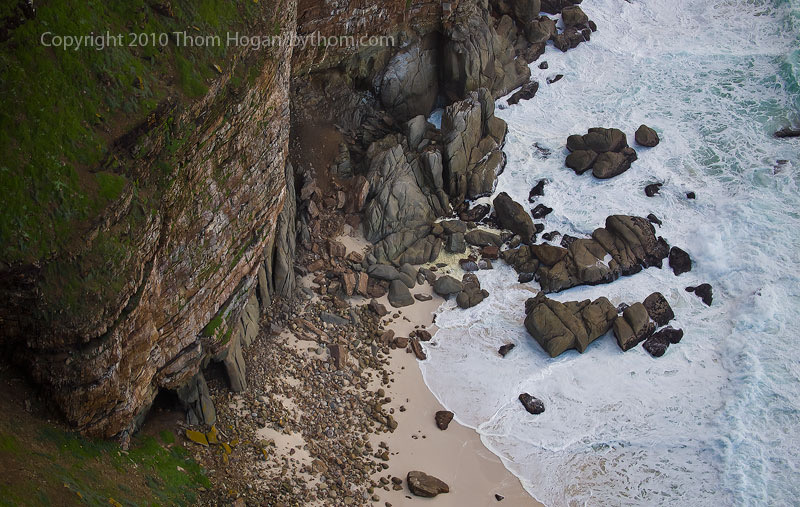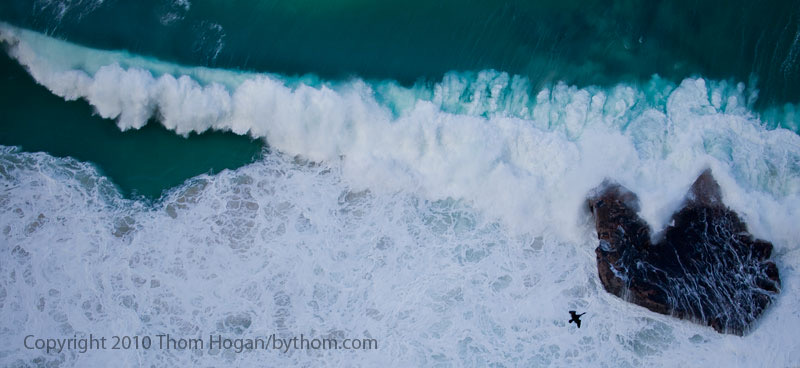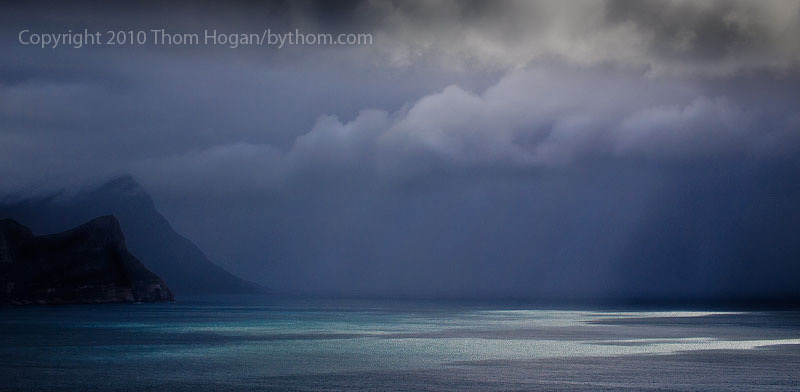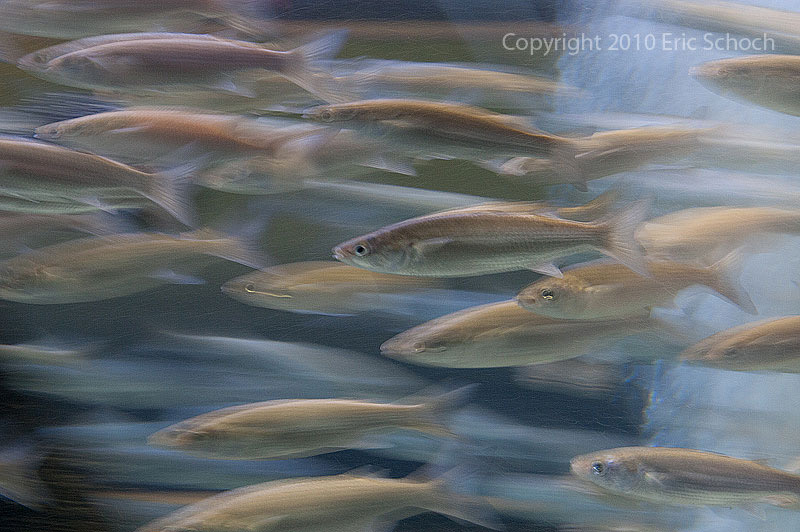Aug 22--One thing about photo workshops is that you sometimes encounter either not enough weather or too much. Not enough weather refers to the dreaded deadly clear skies. All blue--or all gray in some of the more smoggy and dusty places of the world--makes for a boring topping to almost any scenic. A lot of amateurs think that just pumping up the blue factor, perhaps by pulling out the polarizer and turning it all the way to Max, will fix sky problems, but it doesn't. It just makes it look like you used a polarizer.
Too much weather, of course, means that conditions get past the point beyond which workshop students are comfortable (or prepared for) shooting. Snow, rain, tornado, hurricane, monsoon...well, you get the picture (or don't get the picture).
I try to schedule workshops where we'll have the chance of weather (clouds, dramatic skies, etc.) but also have the likelihood of not too much weather. Today, the first full day of the South Africa workshop I failed. We clearly had too much weather.
Not that we didn't get a fair amount of photography in.
Our first subject this morning was Cape Point, and as we arrived the skies opened up enough that we had time to get everyone working on landscapes and seascapes that interested them. Cape Point itself has quite a bit of variety if you've got the time and energy to explore it. Rock gardens. Rocky shores. Beautiful pocket beaches. Lighthouses. And the ubiquitous "more." I found myself drawn towards images looking straight down:


But it also became clear that we were going to get hit by too much weather.
Often you get waves of storm hitting you here in the cape. We could see individual rain bands as they approached from the Northwest (the usual direction, I'm told by locals). We had been happily shooting for almost two hours when I made a prediction: 15 minutes until complete downpour. I was wrong. It was 12 minutes. So we scampered down the hill back to the van, did the towel-dry-your-equipment-before-yourself thing, and...sure enough, squall number one passed. When the sun popped out briefly we flipped over to the other side of the point and got a few more shots in (see below). And yes, that's squall number two headed our way.

It was time to move on when the second squall got to us, so we suffered through it while driving to our next location, the penguin colony on Boulders Beach. As we got there, the penguins were doing pretty much the same thing as we were: drying out. Not too long into shooting the birds a minor squall (number three) hit us, but most of us kept shooting through it. Or I should say, kept trying to frame something up. Apparently the penguins pretty much would rather hunker down during a squall just like us humans. But after rain comes sun on a day like today, so we quickly returned to shooting wet penguins trying to get dry.

Unfortunately, this was also a day that one student happily shot with no card in his camera. Dang those Nikon defaults. So that student had lots of practice framing, focusing on, and shooting penguins, but not much to remember it by.
After a "let's eat indoors, no it's great outdoors so let's move outdoors, no it's getting wet outdoors so let's move back indoors" start to lunch, we finally got somewhat dry and back to good humor (workshop students get a little grumpy when they get wet ;~). The afternoon plan had been to do some close in work in gardens (it's just hinting at spring here, so we're getting first blooms popping up in lots of places), but squall number five (or was it six, somewhere I lost count) ended that plan. So we went for my backup plan, which was to drop into the Two Oceans Aquarium for a little tank action.
Good aquariums these days are very photographer friendly, and Two Oceans is no exception. I worked with individual students for a while, then as they got exhausted and headed back one by one to our nearby hotel, I started puttering on a few images for myself, while also practicing some slow pan shots. I'm trying to get ready for doing some slow pans on safari. You need to practice slow shutter pans a lot to get them right, so panning with fish in the big tank gave me and the others some much needed practice. Here, for example, is one of Eric's pan shots from his time practicing at the aquarium:

Note how the central fish is reasonably sharp while the rest tend to be blurred. That's because Eric is panning on that central fish. If you look at the other fish, you can see varying degrees of blur, as they are swimming at different speeds than the one Eric panned with. The trick with slow pan blur is getting your pan just right. There's a strong tendency to stop the pan the minute you press the shutter release (and possibly move the camera up/down, too). But since you're using very long shutter speeds (typically 1/15 to 1 second), if you stop the pan at or near the start of the shot, you don't keep your subject correctly framed during the shot and lose the acuity and sharpness on your selected subject. This particular exhibit was great for practicing pans because the fish were in a constant motion going around in circles. There was always a group of them passing by in front of us. When you shoot groups like this, you have to pick one subject to follow, and then hope that the rest of the group around it create some interesting pattern and/or are moving at just enough differential to create interesting blurs. Prepare to have a high failure rate at this type of photography. I'm usually happy with about 1 out of every 50 shots I attempt this way. But the more you practice, the higher your keeper rate will be.
By the time the aquarium pushed me out the door so they could close and go home, I walked out into a mild, but very nice sunset. I looked around to see if any of my students were about shooting it, but didn't see any. Hmm. I didn't wear them out already, did I?
